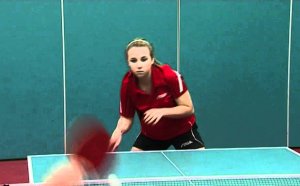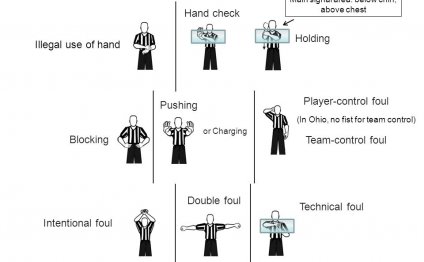
Hand signals in Table Tennis
Do you like to play doubles? Most ping-pong players enjoy a good game of doubles now and again. Playing and winning in doubles competition can be just as rewarding and fun as singles play - after all, there's two of you to share the glory and celebrate!
But most articles written about table tennis tactics and strategies tend to focus on the singles side of competition, while doubles play tends to be treated as afterthought.
There are some important differences between the tactics used for doubles play when compared to singles, so let's have a look at the basics of playing doubles well.
It Takes Two
I have often seen a doubles team of lesser singles players take on and beat a combination of two stronger singles players. The reason?
Just like the old saying, a champion team will beat a team of champions. Two weaker players that know each other's game and play to support each other can be a tougher team to beat than two strong players that don't work well togther. There are also some players who are known as excellent doubles players, simply because they know and apply many of the tactics mentioned below. So if you can understand and use these tips, you should be well on your way to becoming a much better doubles player, regardless of who you partner with.
Doubles Serving Tips and Tactics
- In doubles, you have to serve diagonally to your opponent, from your right hand half of the court to your opponents' right hand half of the court. This reduces the amount of deception you can get from placing the ball well, and allows most opponents to cover the whole half court with either their forehand or backhand side, virtually eliminating the strategy of aiming at their playing elbow. This in turn lowers the effectiveness of longer serves, so most of the serves you perform in doubles should be double bounce serves that bounce low over the net and are difficult to attack.
- When serving, it is important to remember that it is your partner, not you, who has to make the third stroke. In order to improve your partner's chances of making a good third ball attack, you should try to use services that will help set up your partner's best attacks. For example, if your partner is not very good at attacking backspin balls, it doesn't make a lot of sense to keep serving short backspin serves that force your opponents to push the ball back. Short, low topspin/sidespin or float serves that your opponent can flick (but not with too much power) will give your partner a better chance of making his attack.
- A series of signals can also be used when serving to allow your partner to know what serves you will be using, without your opponents overhearing. One simple method is to use two separate signals, the first to indicate the spin on the ball by pointing your finger in the direction the ball will go from your opponent's racket (i.e. down for backspin, up for topspin, a fist for float, and point in any direction that your sidespin will take the ball). Then a second signal can be used for the length of the ball (i.e., pointing forward for a long serve, a fist for a normal double bounce serve, and point backwards for a very short serve).
- Whether the server or his partner makes the signals can depend on several things. Often if one player is much stronger than the other, the better player will tend to make the calls, using his experience to decide what to serve next. If both players are fairly similar in level, quite often the server will make the call, unless his partner has a plan specifically in mind, in which case the partner will signal his suggestions to the server.
Doubles Return of Serve Tips and Tactics
- I feel that the return of serve is often the key to being a winning doubles combination. Since the amount of deception is reduced when serving, a good receiver can often dominate the point, stopping his opponents from attacking and setting up his own partner's attacks.
- When receiving, you can treat it much like returning serve in singles, with a couple of extra provisos in that you should be trying to force play towards the type of game your partner favors. If you are playing with a good forehand looper who can attack off topspin or backspin, then using mostly crosscourt returns will tend to make the line of play from your opponents go crosscourt towards your partners strong forehand. Likewise, if your partner is a strong blocker, then you should be trying to use flicks and loop returns more often than pushing returns short. If your partner is a little slow on his feet, avoid going to the wide angles too often, which will put his footwork under pressure, and concentrate your returns to the middle of the table more.
RELATED VIDEO
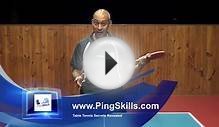
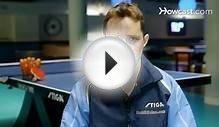
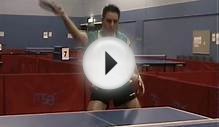
Share this Post
Related posts
Forehand topspin Table Tennis
This stroke is the first forehand topspin stroke taught to the beginners. Offensive players use this stroke in order to prepare…
Read MoreTable Tennis in French
Principales traductions ping-pong, ping pong nnoun: Refers to person, place, thing, quality, etc. trade mark (sport: table…
Read More
